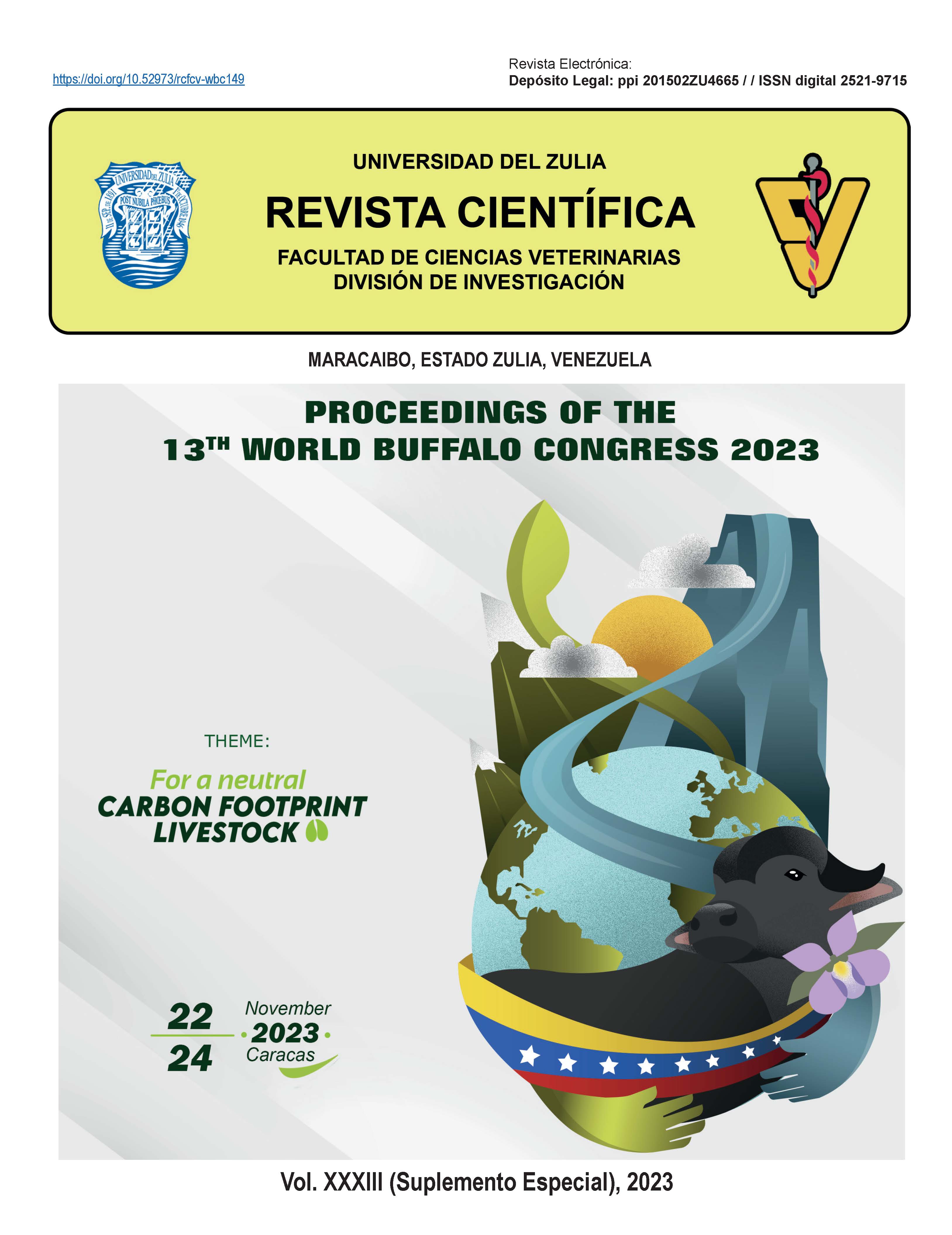Productive performance of buffaloes (Bubalus bubalis) in two production systems and two slaughter weights
Abstract
The objective of this study was to evaluate productive performance in finished male buffaloes at 400 and 600 kg live weight (LW) under two production systems. Twenty-eight male uncastrated buffaloes of 216 ± 21.9 kg LW were used and were randomly distributed into four treatments (T): T1 and T2, grazing buffaloes + 1% live weight supplement (31% soybean paste, 53% ground corn, 10% wheat bran, 1.4% urea and 3.2% minerals, with 30% crude protein and 25% neutral detergent fiber), slaughtered at 400 and 600 kg LW, respectively; T3 and T4, buffaloes in intensive system (10% soybean paste, 15% ground corn, 10% wheat bran, 50% corn stover, 23% poultry litter and 2% minerals, with 12% crude protein and 44% neutral detergent fiber), slaughtered at 400 and 600 kg LW, respectively. Analysis of variance was conducted (PROC GLM; SAS®), considering weight and daily weight gain and fattening period as dependent variables and treatments as independent variables. When numerical differences were detected, a multiple comparison Tukey test was utilized (p<0.05). Results indicated that buffaloes in T4 showed significantly higher values of daily weight gain (p<0.001) compared to T3 and T4, and finally, T5 (1.10, 0.92, 0.95 y 0.62 kg/day, respectively). Likewise, it was observed that buffaloes that were raised with grazing equaled gains of the animals raised in intensive systems and slaughtered at 400 kg (p>0.05). Finally, it was observed that the fattening period was more extended in T2 compared to T1, T3, T4, and T1 (368, 228, 304, and 301 days; p <0.001, respectively). In conclusion, buffaloes raised in intensive systems show better daily weight gain. Feeding buffaloes with concentrated diets and slaughtering them at 600 kg LW is related to better weight gains, but the time to reach this weight is longer than 300 days. Therefore, it is recommended to slaughter at 400 kg LW.
















